Term
Description
Land-use Planning
Land use planning includes allocating spaces for residential, commercial, industrial, and public uses such as parks, schools, and other public facilities.
Lateral Loads
Lateral loads refer to horizontal forces that act on a structure perpendicular to its vertical axis. These loads are typically caused by external factors such as wind, earthquakes, water pressure, or soil pressure. Lateral loads pose a significant design consideration for structures, as they can induce significant stresses and deformations that need to be accounted for in the structural design.
Leadership in Energy and Environmental Design (LEED)
A widely recognized and internationally used green building certification program developed by the U.S. Green Building Council (USGBC). It provides a framework for designing, constructing, operating, and maintaining sustainable and environmentally friendly buildings and communities. The goal of LEED is to promote resource efficiency, reduce environmental impact, improve indoor environmental quality, and create healthier spaces for occupants.
LEED certification is a point-based rating system, where projects earn points for various sustainable features and practices implemented throughout the design and construction process. The total number of points a project earns determines its LEED certification level. There are several LEED rating systems tailored to different types of projects, such as new construction, commercial interiors, existing buildings, homes, and neighborhood development.
Legibility (vs. Readability)
The quality of typefaces or fonts that make up the individual characters in a text. A legible typeface occurs when the individual characters are clear and distinct from one another, making it easy to recognize and read each letter. Legibility is primarily concerned with the design of individual letterforms, including character spacing, stroke width, and the overall shape of the characters. Typefaces with high legibility are generally simple in design.
Level 5 autonomous vehicle
A level 5 autonomous vehicle is a type of self-driving car that is capable of completely autonomous operation, without requiring any human input or intervention. This is the highest level of autonomy as defined by the Society of Automotive Engineers (SAE), which has developed a six-level scale for classifying autonomous vehicles.
At level 5, the vehicle is capable of driving itself in all conditions and situations that a human driver could navigate, including complex urban environments and inclement weather. The vehicle’s sensors, cameras, and other advanced technologies are able to detect and respond to all roadway conditions, traffic signals, and other road users.
Level 5 autonomous vehicles do not require a human driver to be present or available to take over control of the vehicle. They are able to safely and reliably transport passengers to their destination without any input from a human driver. However, it is worth noting that while the technology for level 5 autonomous vehicles is rapidly advancing, there are still regulatory, legal, and technological challenges to overcome before they become widely available to the public.
Level of Service (LOS)
A measure used to assess the quality and performance of transportation facilities, particularly roadways. It quantifies the operational conditions experienced by drivers and provides a standardized way to evaluate the efficiency and effectiveness of a transportation system. LOS is commonly used in traffic engineering and planning to analyze and compare different road segments, intersections, and corridors. LOS is typically defined using a letter grade system, ranging from A to F, with A representing the best operating conditions and F indicating severe congestion and poor performance. The specific criteria for each grade may vary depending on the context and the type of facility being evaluated. The criteria often include factors such as speed, travel time, traffic volume, density, and delay.
LED Lighting
Light-Emitting Diode lighting is a type of lighting technology that uses light-emitting diodes (LEDs) as the source of illumination. LED lighting has gained popularity in recent years due to its energy efficiency, long lifespan, durability, and versatility.
License plate recognition (LPR)
License Plate Recognition (LPR), also known as Automatic License Plate Recognition (ALPR), is a technology that uses optical character recognition (OCR) and image processing techniques to automatically read and interpret license plate numbers from images or video footage. It is commonly used in various applications such as law enforcement, parking management, toll collection, and traffic monitoring.
Life Cycle Cost (LCC)
The total cost associated with a product, system, or project over its entire life span, including its acquisition, operation, maintenance, and disposal. It is a comprehensive approach to evaluating costs that considers not only the initial investment but also the costs incurred throughout the entire life cycle.
Light Pollution (Skyglow)
Light emitted above the light fixture from surface parking lots and roofs of parking structures produces light pollution or skyglow.
Light Standard
Light poles or streetlight poles, are vertical structures that support lighting fixtures for illuminating outdoor areas, such as streets, sidewalks, parking lots, and public spaces. These standards are designed to hold the lighting equipment securely and provide proper illumination for safety and visibility
Light Trespass
Light that spills onto adjacent property or even beyond the limits of the parking facility. Some municipalities have restrictions on light trespass.
Lighting Power Density (LPD)
Refers to the amount of electrical power consumed by lighting systems per unit of area in a given space. It is a metric used to assess the efficiency and energy consumption of lighting installations in buildings.
Live Loads aka Live Design Loads
Refer to loads that are temporary, transient, or moving in nature and are not permanently fixed within a structure. Live loads are typically associated with the occupancy, use (automobiles, people, office furniture, storage, etc.), or activities (walking, running, vibrations, etc.) within a building or structure. They represent the loads that can change in magnitude, location, or duration over time.
